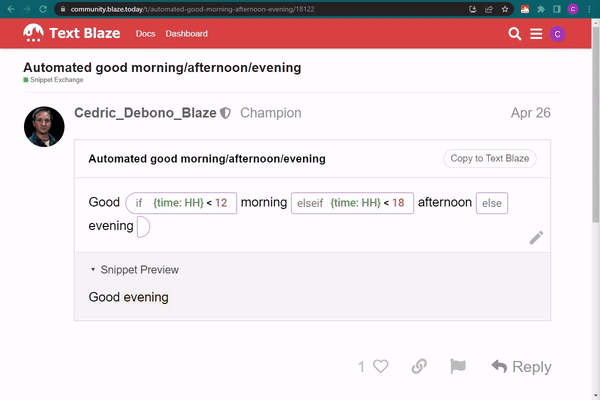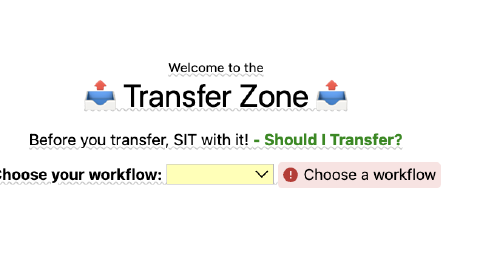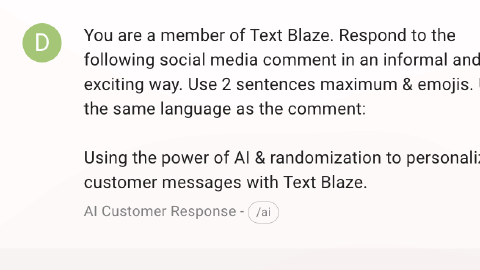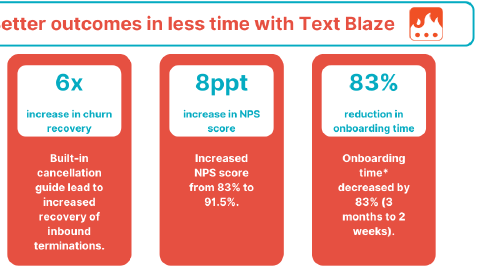Streamlining Medical Paperwork & Documentation With Text Blaze
Using Text Blaze to reduce assesment times and spend less time doing paperwork.
Note: This GIF shows how to copy snippets to your dashboard so that you can use them and customize them to fit your needs.
I’m Stephanie Yakobina, a Certified Hand Therapist/Occupational Therapist.
The #1 complaint among therapists in the rehabilitation setting is the paperwork. I have been practicing for over 28 years and the paperwork has progressively gotten worse.
You have to provide very detailed notes for insurance companies to reimburse claims.
Text Blaze helps me save time by filling out certain sections of my paperwork for me.
It helps me finish my paperwork while I’m still sitting with a patient. Before using Text Blaze, I would stay up until 11:30 at night doing paperwork at home.
The time I get back is the true value that Text Blaze provides me.
Eliminating repetitive typing and paperwork
Initial assessments are fairly similar, and you often say the same thing to patients (and document it).
Text Blaze helps reduce my daily documentation time by eliminating the time I spend taking notes and writing things down.
Here’s a common snippet that I use to save time:
Ultimate time-saver
I was interviewing a therapist for a position at our clinic, and she asked, "Do you use Text Blaze?’ She showed it to me and that night, after just trialing five snippets, I thought "I’m hooked!"
I treat many patients every day, and I have to provide very detailed notes about what was covered during each visit. This is very repetitive and time-consuming.
Using Text Blaze to quickly insert my comments truly helps me spend more time with my patients and less time doing paperwork, which is something both the patient and I appreciate.
My snippets create a great foundation for my notes and I can easily add more patient-centered details as needed.
Here’s an example snippet that I use to do this:
Useful features
Some of my favorite features of Text Blaze are the date and time features.
While doing paperwork, if I forget to write the date on a document, it could result in the insurance company denying coverage of the treatment session.
Text Blaze helps reduce this worry by automatically including the date and time in my notes.
Here’s an example snippet that I use for my tennis elbow patients:
INITIAL EVALUATION: {time: MM/DD/YYYY:}
HISTORY OF PRESENT ILLNESS: The patient is being seen for evaluation of lateral epicondyle elbow pain. He states that this pain has been bothersome for months. Pt consulted with the doctor and was referred to hand therapy for lateral epicondylitis. The patient presents today for his initial evaluation and treatment.
DX: right/left lateral epicondylitis DOI:
PRIMARY COMPLAINTS: Swelling, stiffness, pain, weakness, and lack of use of the symptomatic hand in everyday activities.
PRIOR FUNCTIONAL STATUS: Prior to onset of symptoms, the client was fully independent with all self-care, home tasks, work, and recreational ADLs.
CURRENT FUNCTIONAL STATUS: See "Client Information Sheet" for activities that patient reports having difficulty with. Client reports difficulty in the following activities: eating/using utensils, showering, dressing, cooking/meal preparation, opening jars & bottles, lifting pots & pans, lifting bags & groceries, and weight-bearing through wrist, going to the gym, and gardening/yard work. See QuickDASH for details.
Occupation: Social status:
PAIN: Pain location: lateral epicondyle and dorsal FA musculature At worst: /10 Current: /10 At best: /10 Pain description: Pain Follow-up Plan: Splint use, activity modification, exercises, and modalities as appropriate.
PATIENT GOALS: To decrease pain, decrease swelling, increase strength, improve motion, and improve function.
OBJECTIVE FINDINGS:
Handedness: Right Left
Splint Use:
Swelling: The client presents with swelling localized to
Digit /Thumb AROM: WNL.
Wrist AROM: WNL but painful at end ranges of motion.
Elbow AROM: WNL.
Grip & Pinch Strength (kgs): R L Lev 2 Extended L Key 3JC 3JC ext Tip
Sensation: Pt denies any abnormal sensation.
Palpation: The client presents with tenderness upon palpation of the lateral epicondyle, and tightness along the ECRL/B, ECU, and BR.





